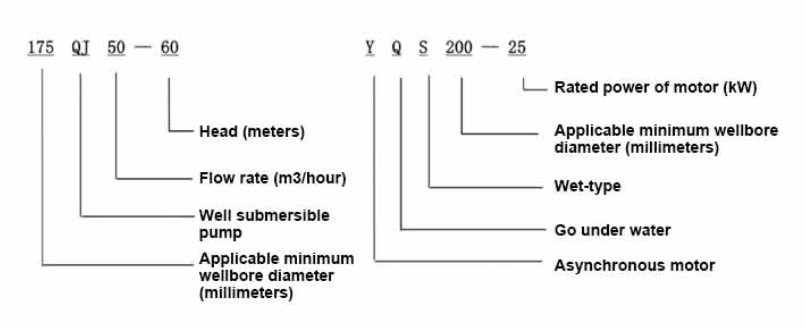Desemba . 05, 2024 14:31 Back to list
heavy duty submersible pump
Heavy-Duty Submersible Pumps An Indispensable Tool for Modern Industries
In today’s rapidly evolving industrial landscape, the role of heavy-duty submersible pumps cannot be overstated. These robust machines are designed to operate underwater, making them essential for a wide range of applications, from construction and mining to wastewater management and agriculture. As industries continue to grow, the demand for reliable and efficient pumping solutions has never been more crucial.
Overview of Heavy-Duty Submersible Pumps
Heavy-duty submersible pumps are specialized pumping devices submerged in fluid environments. They are engineered to handle large volumes of water or other liquids laden with solids, making them ideal for challenging tasks such as draining flooded areas, dewatering construction sites, or managing sewage systems. These pumps typically feature a sealed motor configuration, allowing them to work underwater without the risk of electrical hazards or damage.
The design of a heavy-duty submersible pump typically includes a powerful motor, an impeller, and a volute casing, all made from durable materials that resist corrosion and wear. Key features often include multiple impeller configurations to accommodate different flow rates and pressures, allowing for versatility depending on the specific application.
Applications
1. Construction Sites At construction sites, heavy-duty submersible pumps are critical for dewatering operations. They efficiently remove groundwater or surface water, ensuring that excavations remain dry and safe for workers. Their ability to operate underwater allows continuous and uninterrupted pumping, which is vital for maintaining project timelines.
2. Mining Operations In the mining industry, these pumps are used to handle heavy sludge and mine water. The ability to manage abrasive materials without significant wear is a distinct advantage, ensuring that operations continue smoothly without costly downtime.
heavy duty submersible pump

3. Wastewater Management Heavy-duty submersible pumps play an essential role in municipal wastewater treatment plants, where they transport raw sewage and treated effluent. Their efficiency in handling solid materials makes them suitable for such environments, reducing the risk of blockages and ensuring reliable flow.
4. Agriculture In agriculture, these pumps are used for irrigation and water management. They can draw water from deep wells or reservoirs, providing farmers with the necessary resources for crop irrigation, especially in regions with limited water supply.
Advantages
The advantages of heavy-duty submersible pumps are numerous. Firstly, their ability to operate in submerged conditions minimizes the need for complex installation setups, reducing labor costs and time. Secondly, these pumps are designed for durability, often featuring components that withstand extreme conditions, such as high temperatures and corrosive fluids.
Moreover, modern heavy-duty submersible pumps are increasingly equipped with advanced technologies, such as variable speed drives and monitoring systems. These enhancements allow for better control and efficiency, adjusting flow rates and performance based on real-time needs.
Conclusion
Heavy-duty submersible pumps stand as a testament to modern engineering and technology's capabilities. Their versatility and reliability make them indispensable in various industries, ensuring that operations continue smoothly and efficiently. As we look to the future, the evolution of these pumps will likely bring even more innovations, catering to the ever-changing demands of industry and infrastructure. Whether it’s for dewatering a construction site or managing wastewater in a municipality, heavy-duty submersible pumps are poised to remain a pivotal component of industrial processes for years to come.
-
Water Pumps: Solutions for Every Need
NewsJul.30,2025
-
Submersible Well Pumps: Reliable Water Solutions
NewsJul.30,2025
-
Stainless Steel Water Pumps: Quality and Durability
NewsJul.30,2025
-
Powerful Water Pumps: Your Solution for Efficient Water Management
NewsJul.30,2025
-
Oil vs Water Filled Submersible Pumps: Which is Better?
NewsJul.30,2025
-
Deep Well Pumps: Power and Reliability
NewsJul.30,2025
-
 Water Pumps: Solutions for Every NeedWhen it comes to handling dirty water, the dirty water pump is a must-have.Detail
Water Pumps: Solutions for Every NeedWhen it comes to handling dirty water, the dirty water pump is a must-have.Detail -
 Submersible Well Pumps: Reliable Water SolutionsWhen it comes to ensuring a reliable water supply, submersible well pumps are a top choice.Detail
Submersible Well Pumps: Reliable Water SolutionsWhen it comes to ensuring a reliable water supply, submersible well pumps are a top choice.Detail -
 Stainless Steel Water Pumps: Quality and DurabilityWhen it comes to choosing a water pump, the stainless steel water pump price is a crucial factor.Detail
Stainless Steel Water Pumps: Quality and DurabilityWhen it comes to choosing a water pump, the stainless steel water pump price is a crucial factor.Detail
